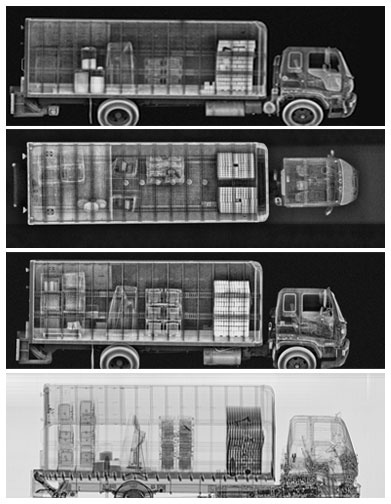The US 100% air cargo scanning deadline has now past...
The 2007 law in the United States called for 50 percent of air cargo on passenger aircraft to be screened by February 2009, and 100 percent by August 2010. The Act defines screenin...

The 2007 law in the United States called for 50 percent of air cargo on passenger aircraft to be screened by February 2009, and 100 percent by August 2010. The Act defines screening as "a physical examination, or non-intrusive method of assessing whether cargo poses a threat to national security," it specifies methods that "include x-ray systems, explosives trace detection, explosive detection canine teams certified by the TSA, or physical search together with manifest verification".
This meant that those shipping air cargo to the United States were faced with the need to x-ray every individual box, parcel, container or pallet. The key difference between the new requirements for the screening of air cargo and the pre-existing air passenger screenings is that the US government did not offer to either do the work or to pay for it. The air freight industry was expected to cover the cost. The 100 percent screening of air cargo on domestic passenger flights within the US has now been achieved. This result clearly demonstrates that enhanced security screening is both possible and achievable; even when it is industry funded. However, it has been reported that 20 percent of air cargo that comes to the US from overseas each year is physically checked for explosive devices. Given recent events, the screening of international air cargo is likely to be the subject of much discussion by industry and regulators.
So what can we learn from the US domestic experience in trying to address this issue?
Firstly, it took months of regulator outreach and education to create both an understanding of what was required and an appreciation of the technology, tools and procedures available to the freight industry. Secondly, it was important that the regulator - in this case the US TSA - specified, tested and approved the equipment designed to meet the standards required for the screening of cargo from a single package, a pallet and right up to a densely packed cargo container. Thirdly, it demonstrated the importance of appreciating and understanding the complete supply-chain within the complex air cargo industry. Thorough training and a wide range of technologies need to be deployed at exactly the right points in this chain in order to move to the 100 per cent security screening of air-cargo on passenger aircraft.
The new law also created the opportunity for air cargo carriers to become 'certified' if they can prove that the required screening of their shipments is done before the cargo leaves their facilities. This means that those carriers who invest in efficient screening equipment have the opportunity to create real business advantage above those who do not. The air cargo industry will want to avoid any disruption to the speed of their shipments and they should therefore explore the proven technologies deployed in the US that are able to securely scan cargo by the container load. By minimising or negating the need to break cargo down for scanning air freight carriers can save both cost and time as security is enhanced to meet the new regulatory requirements.
Rapiscan is one of a select few security technology providers to have had multiple systems placed on the TSA's Qualified Technology List for Air Cargo Screening. All the systems use advanced, high performance transmission x-ray technology, which allows for outstanding detection of organic and inorganic threats, such as narcotics, weapons, liquid threats, explosives and other items. Rapiscan is the only technology vendor to offer a TSA approved 1 MeV high energy X-ray screening solution for the inspection of large and densely packed air cargo pallets and ULD containers.
Proven dual view imaging: Rapiscan's dual view imaging technology has been approved for use by both the TSA and UK Department for Transport (DfT). Dual view imaging offers a significant advantage operationally because it gives the operator an additional view through which to detect threats and to gather important information regarding the size and density of the items being scanned - which is particularly important in air cargo, where the materials being scanned can vary dramatically, from container to container.
Advanced threat detection software: The advanced threat detection software uses the breadth of information gathered during the x-ray scan to help the operator identify all potential areas of interest in an air cargo container.
Outstanding value: Latest systems offer air cargo companies the best overall combination of reliability, price competitiveness and detection capability available.
Well before the TSA regulations were in place, solutions were chosen by air cargo carriers, airlines and freight forwards around the world. All air cargo technologies comply with applicable international safety standards and regulations. The fully-integrated, all-inclusive solutions are already in use by major carriers such as FedEx, UPS, TNT and DHL. Rapiscan applies the broadest array of technologies to meet individual customer needs, and supports its systems with a global service network. The result for a customer is the ability to meet or exceed the TSA requirements as a certified cargo carrier without slowing down the service they provide to the customer.














